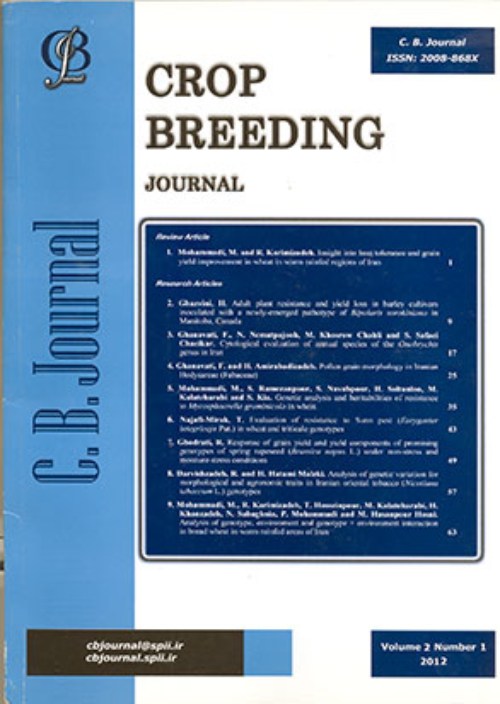Pomological attributes among Iranian sour pomegranates (Punica granatum L.)
Author(s):
Article Type:
Research/Original Article (دارای رتبه معتبر)
Abstract:
Pomegranate is one of the most important horticultural crops in Iran. Fruit pomological characterization has usually been used for the assessment of pomegranate germplasm, and is a crucial step before the beginning of any molecular study. In spite of the commercial importance of Iranian pomegranate fruit worldwide, little information is available on the attributes of some of its genotypes. In this two-year study, 15 pomological attributes of 38 sour pomegranate genotypes growing in Markazi province were evaluated. A great variability was found among pomegranate genotypes in fruit weight and size, calyx size, 100 arils (g), total soluble solid contents, peel thickness, crack sensitivity, aril adhesion to the skin, aril colour, aril juiciness and seed hardiness. Some genotypes were notable for their various characteristics. For example,"6-3-S"genotypes with large fruit and good aril yield, red color, juicy aril, soft seeds, slight adhesion of the aril to the skin and low sensitivity to cracking is promising genotype for food processing and marketing. A greater part of variance was counted by traits such as calyx diameter, calyx length, fruit length, fruit weight and aril weight that showed wide variability among accessions and could be utilized for future breeding programs.
Keywords:
Pomegranate , Pomology , Fruit , IRAN
Language:
English
Published:
Crop Breeding Journal, Volume:7 Issue: 2, Summer-Autumn 2017
Pages:
67 to 73
https://magiran.com/p1835476


